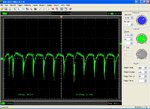blapcb
Full Member level 3
- Joined
- Jan 7, 2007
- Messages
- 188
- Helped
- 2
- Reputation
- 4
- Reaction score
- 0
- Trophy points
- 1,296
- Location
- Planet earth (most of the time)
- Activity points
- 2,766
The line drivers I am using (MAX3232) are injecting a lot of A/C ripple in to the 3.3v Vcc (about 80-100mV) because of their charge pumps. My LDO is MIC5209 and without the line drivers I get only 5-10mV ripple. How can I isolate the Vcc going to the line drivers from the rest of the rail? Some type of inline filter?
Thanks
Thanks
